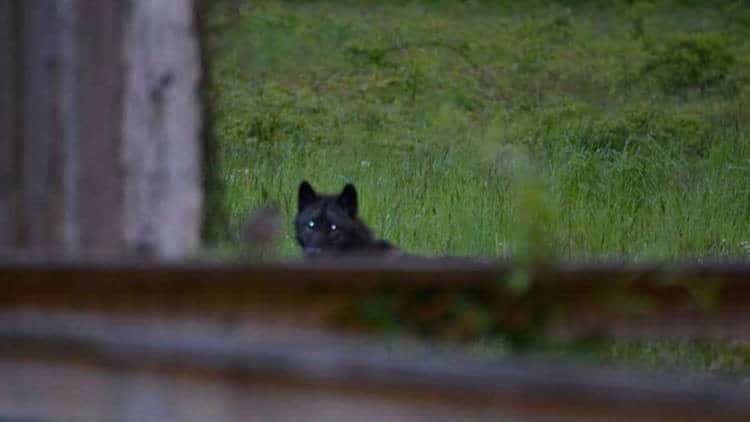
Iconic Carnivores of the North Cascades
On March 31, North Cascade Institute Graduate M.Ed. student Gina Roberti had the wonderful opportunity to attend a presentation by Roger Christophersen, biologist for North Cascades National Park, during the Institute’s Spring Dinner. Roger was an engaging speaker, and since so much of the information he presented is relevant to the work we do as educators, Gina took careful notes and sent them to me, the Blog Editor, to share in an article.
Through this post, we hope to relay some of the information we have learned about wildlife in the North Cascades Ecosystem. Happy Exploring!
Ecosystems are not only more complicated than we think,
they are more complicated than we can think.”
~ Frank Egler, 1927
For context, the North Cascades National Park Service Complex consists of two National Recreation Areas (Ross Lake NRA and Chelan NRA), and North Cascades National Park. Collectively this comprises approximately 683,000 acres of land, with 93% of that landscape designated as wilderness. The North Cascades Complex also hosts over 200 species of birds and 75 species of mammals. So why is there such a wide variety of life within the North Cascades compared to other national parks?
Reason #1: Our location is unique because it bridges the divide between the eastern side of the mountain range and the west, leading to higher biodiversity. The North Cascades Complex is an intersection of ecology – the northern boreal forest meets shrub-steppe, and western wet forests meets the continental dry.
Reason #2: We are also far enough north with enough elevation to support high alpine species and glaciers.
Reason #3: The North Cascades Complex has enough acreage and habitat to support “top of the food chain predators” in modern times. This rugged and undisturbed area is home to many mammals emblematic of wilderness, due to its large contiguous stretches of land lacking easy human access and roads
Iconic Carnivores in the North Cascades
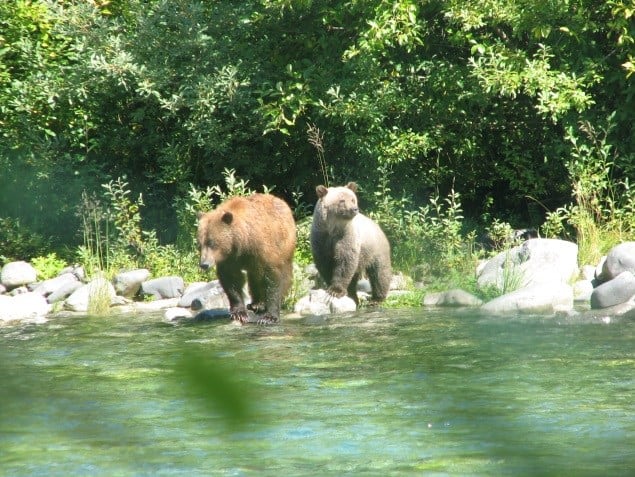
Grizzly bears* (Ursus arctos) are mammals who have existed in the North Cascades Ecosystem for thousands of years. However, from the mid-1800s to early 1900s, the population in the lower 48 states dropped from about 50,000 animals to less than 500 bears. Today, there are approximately 1500 grizzly bears occupying 5 separate ecosystems in the western United States.
No one knows how many grizzly bears remain in the North Cascades ecosystem, except that there are very few (click here to learn about grizzlies from the NPS). Only two have been verified in the Cascade Mountains of British Columbia, CA, just north of the park complex. Fun fact: a photograph of a grizzly bear was captured most recently near the east entrance to Manning Park, B.C. in October 2015!
Why are grizzlies important for our ecosystem? There are many reasons, but some of the most compelling are the fact that they serve as seed dispersers, keep predator/prey systems in check, nutrient recycling and hold cultural significance in tribal communities. There has been a huge public response to the open comment period for the most recent Draft Environmental Impact Statement (DEIS). Although progress was halted following the 2016 Presidential Election, just recently Secretary of the Interior, Ryan Zinke, offered support for the North Cascade Grizzly Bear EIS process to continue, and noted that a decision will be reached by the end of this year.
*Note, although grizzlies are of the order Carnivora and have a digestive system similar to those of carnivores, their diets are typically omnivorous (NPS, 2016).
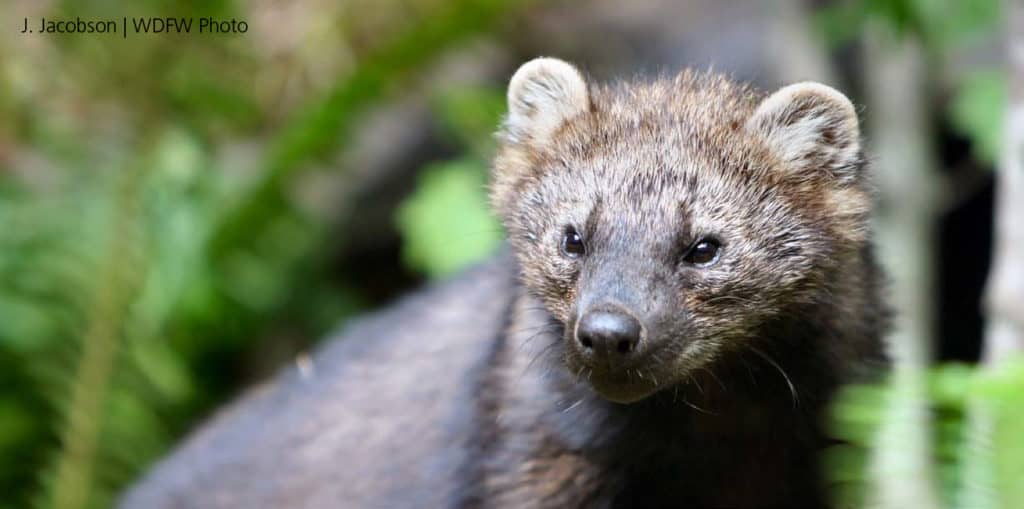
The Pacific fisher (Pekania pennanti) has been considered extirpated (absent) from the North Cascades and much of the lower 48, which has resulted in the loss of a key component of the ecosystem. In recent years, reintroduction has began in Washington State with major collaboration between tribes, Fish & Wildlife, US Forest Service, the National Park Service, and Conservation Northwest. Initially, 90 fishers were released in Olympic National Park over three winters from December to February in 2008-2011. 69 animals were released in the South Cascades (Mt. Rainier National Park and Gifford Pinchot National Forest) over two winters from December to February 2015-2017.
Fisher restoration / reintroduction in the North Cascades Complex was scheduled for the winter of 2017-2018, yet summer fires in British Columbia near Williams Lake area – where source populations are “seeded” – stalled the project. Biologists want to ensure that fisher populations are stable before relocating the animals. The current plan is to source from a new area in Alberta (where fisher populations are healthy, and hunting/trapping is allowed), and release 40 individuals in 2018-2019, and then 40 animals the following year.
Click here to watch a beautiful video on fisher restoration efforts at Mt. Rainier.
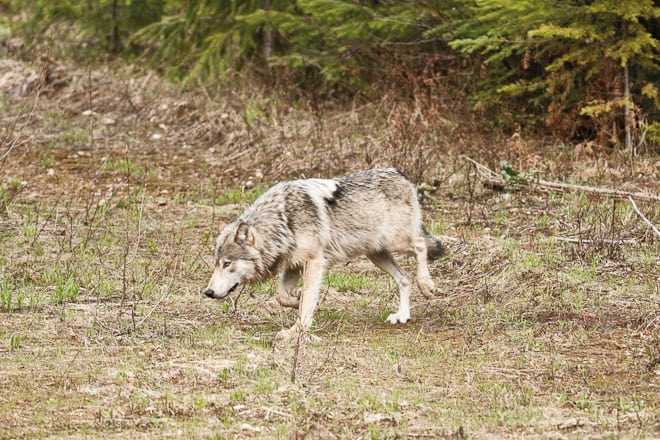
Gray wolves (Canis lupus) have been roaming the vicinity of Ross Lake on both sides of the US/CA border since 1984. However, extensive trapping of wolves for their pelts began in the 1920s when Hudson’s Bay Company made it to the American Northwest. From 1827 through 1859, a reported 7,761 wolf pelts were purchased from trappers in the North Cascades (for more information, read this article by the NPS). By the 1930s, it was believed that wolves were completely eliminated from Washington state.
In 2008, the Lookout Pack, who is genetically related to wolves from BC or Alberta, was the first confirmed wolf pack in Washington since extermination. Unfortunately, the pack’s numbers have decreased due to poaching, getting hit by cars, and wildfires. As of now, the Lookout Pack has 3-4 individuals, and the Loupe Loupe has 6-8. The status of wolves in Washington for 2017 equates to 22 different packs with a total of 122 wolves.
Last year, one wolf was found wandering around Marblemount, WA. That wolf was the first confirmed sighting of a wolf in western Washington in 50-100 years. It was captured and radio collared by Fish & Wildlife; perhaps two or more wolves inhabit this area, but they are not yet confirmed. Click here to watch an interview of folks who saw the wolf in Marblemount, and here to view photos of two black wolves spotted near Rainy Pass.
Is the absence of evidence evidence of absence?”
~ Carl Sagan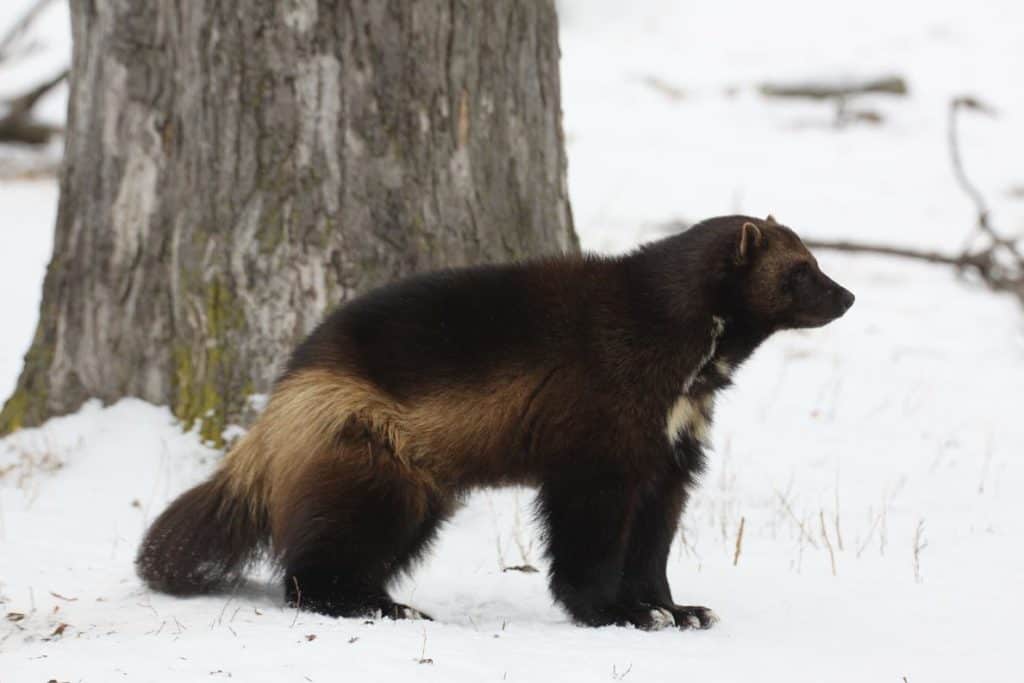
The Wolverine (Gulo gulo) is one of the rarest mammals in North America; their numbers in Washington are suspected to be close to three dozen individuals. They spend their time in remote landscapes with extremely limited human access, such as the alpine and subalpine areas of the North Cascades. They are also the largest land-dwelling species of the Mustelid family, or weasel, known for their tenacity.
If wolverines have a strategy it’s this: Go hard, and high and steep and never back down. Not even from the biggest grizzly and least of all from the mountain. Climb everything… Eat everybody. Alive, dead, long dead, moose, mouse, fox, frog, it’s still warm heart or frozen bones.”
~ Douglas Chadwick, The Wolverine Way
There was a major project underway in the North Cascades region, documenting the extent of wolverines within the territory from 2006 – 2014. Fourteen animals were captured, and have seven ranges that overlap into North Cascades National Park. The study documented two den sites – the first two documented in Washington (wolverines den under deep snow in high alpine).
Wolverine monitoring in Wyoming, Montana, Idaho and Washington are conducted with special scent release dispenser stations: camera traps are designed / donated by Microsoft, where mustelid / skunk musk scent is released at 2-3 ml once a day, over many months. This remote camera strategy enables us to study these creatures that live in winter lands far out of human accessibility. This project has also used non-invasive “fun – pole” stations where gun brushes grab wolverine hair for DNA samples. The remote cameras then take pictures of the unique chest blaze on individual wolverines to be used for identification. These methods of ID are much less invasive than trapping and implanting trackers.
To learn more about mammals in North Cascades National Park, click here for the page hosted by the National Park Service. There is also a complete species list to explore here.


North Cascades is such a paradise of beauty Nature!